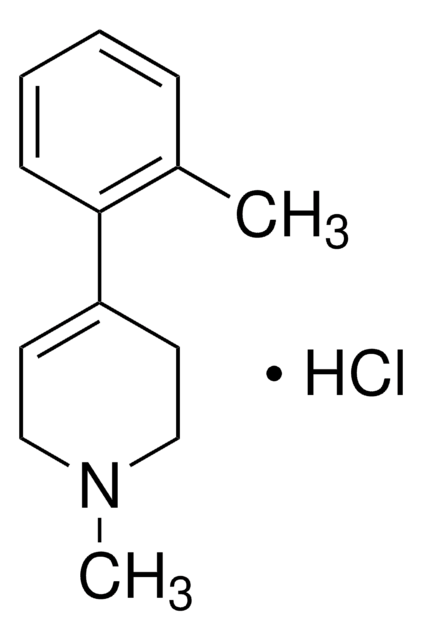199915
1-Methyl-4-phenyl-1,2,3,6-tetrahydropyridine
97%
Synonym(s):
MPTP
About This Item
Recommended Products
assay
97%
form
solid
drug control
regulated under CDSA - not available from Sigma-Aldrich Canada
bp
128-132 °C/12 mmHg (lit.)
SMILES string
CN1CCC(=CC1)c2ccccc2
InChI
1S/C12H15N/c1-13-9-7-12(8-10-13)11-5-3-2-4-6-11/h2-7H,8-10H2,1H3
InChI key
PLRACCBDVIHHLZ-UHFFFAOYSA-N
Looking for similar products? Visit Product Comparison Guide
Biochem/physiol Actions
Warning
signalword
Danger
hcodes
pcodes
Hazard Classifications
Acute Tox. 3 Oral - STOT SE 1
Storage Class
6.1A - Combustible acute toxic Cat. 1 and 2 / very toxic hazardous materials
wgk_germany
WGK 3
flash_point_f
235.4 °F - closed cup
flash_point_c
113 °C - closed cup
Certificates of Analysis (COA)
Search for Certificates of Analysis (COA) by entering the products Lot/Batch Number. Lot and Batch Numbers can be found on a product’s label following the words ‘Lot’ or ‘Batch’.
Already Own This Product?
Find documentation for the products that you have recently purchased in the Document Library.
Our team of scientists has experience in all areas of research including Life Science, Material Science, Chemical Synthesis, Chromatography, Analytical and many others.
Contact Technical Service









